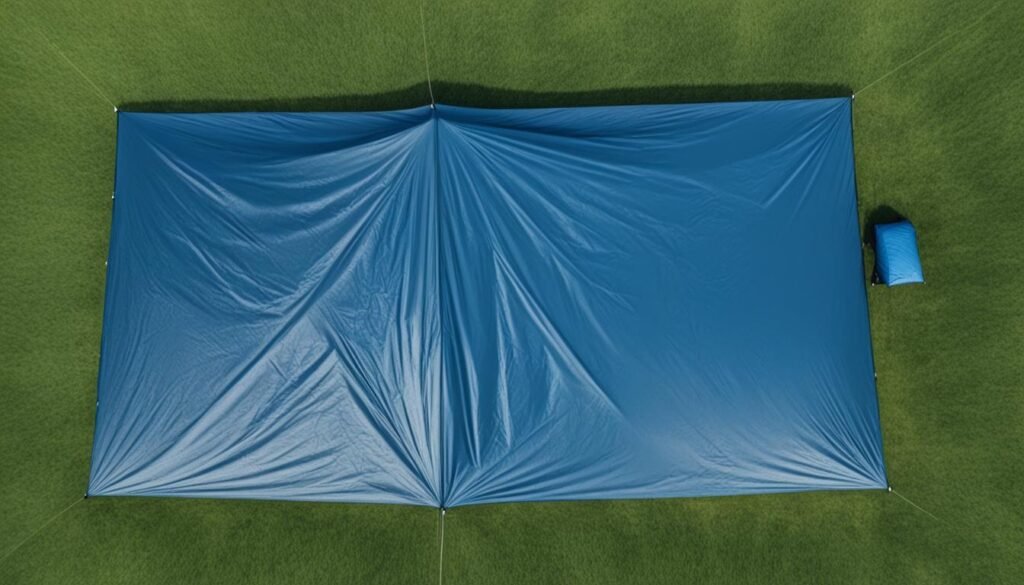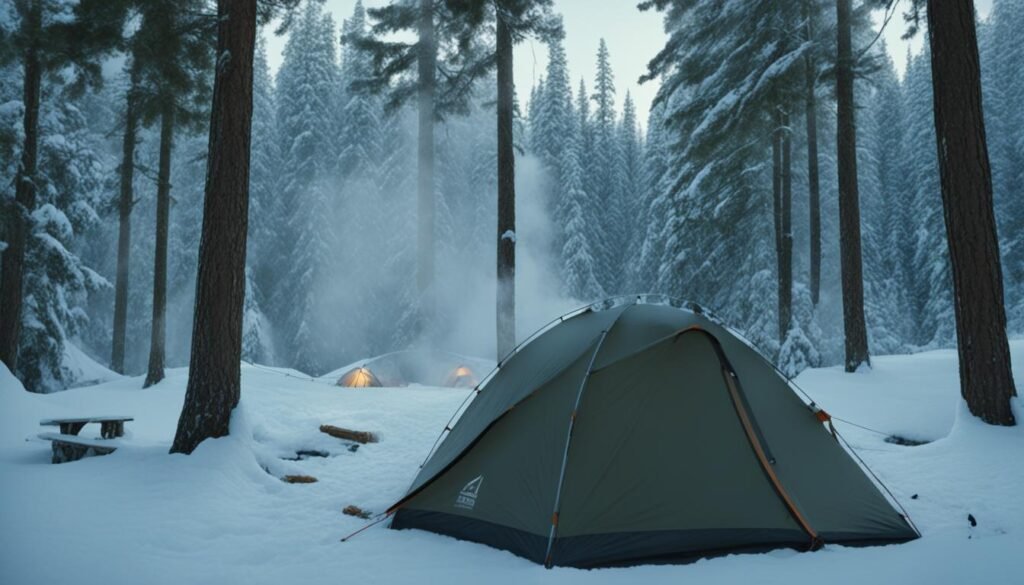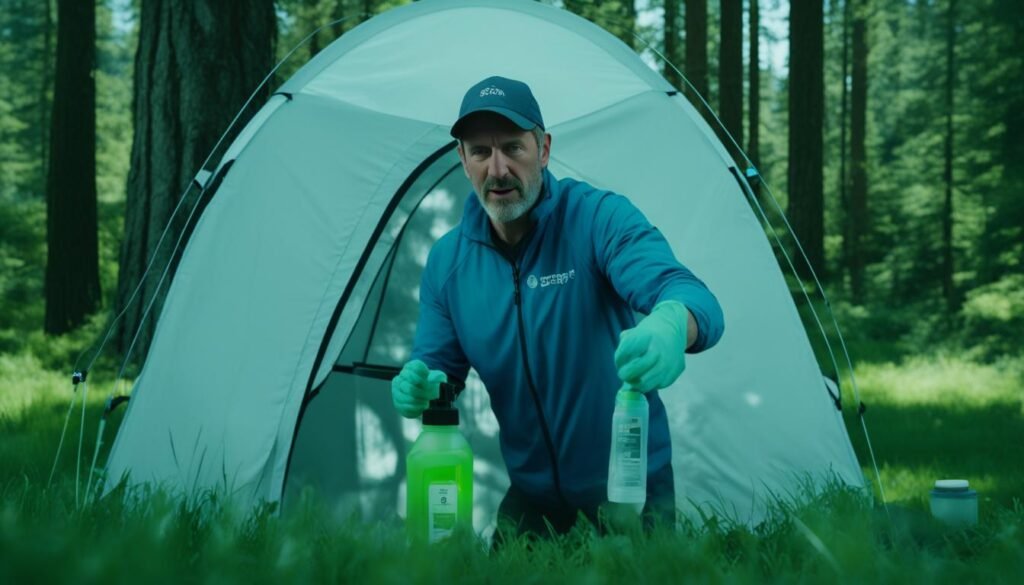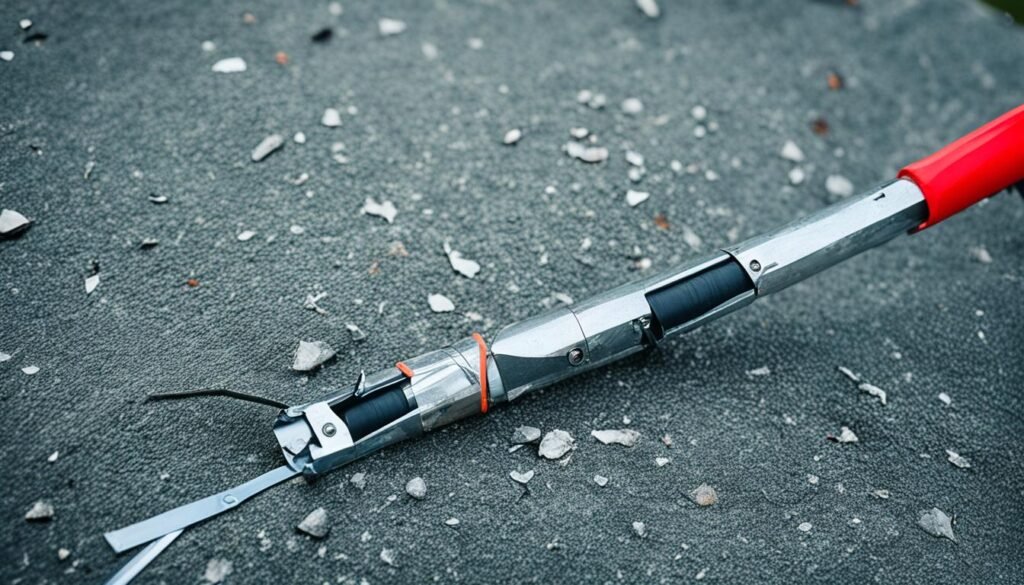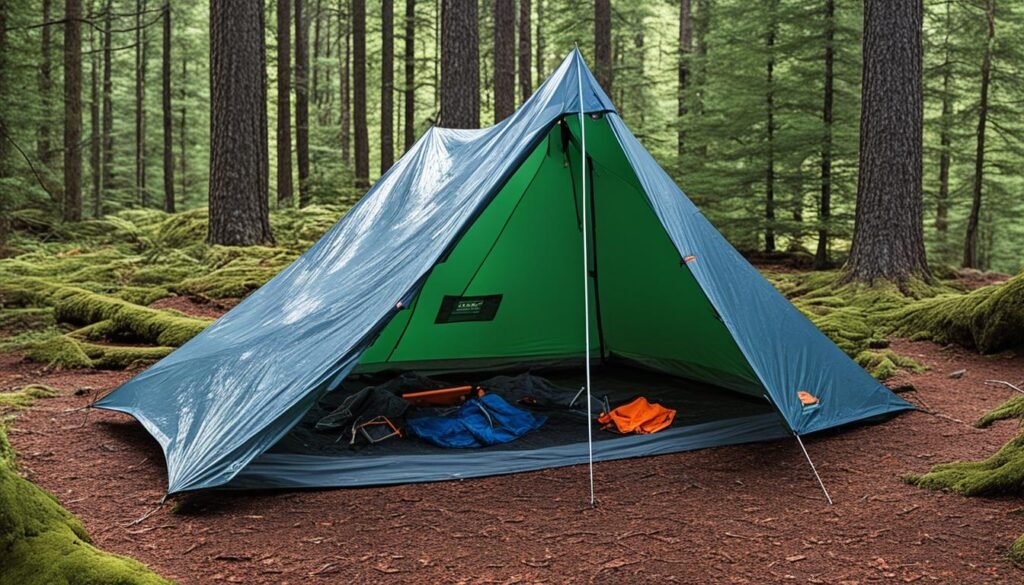Camping is a great way to get back to nature. But, a leaking tent can spoil the fun fast. Many things can make a tent leak. These include the sun’s UV rays which can damage the fabric, and setting the tent up and taking it down over and over. It’s key to learn about these things to keep your tent in good shape. This way, you can fix it when it gets ripped. Learn how to fix tent rips.
Taking good care of your tent is super important. Clean it often and store it right to make it last longer. But sometimes, things go wrong. It’s good to be ready to fix any damage. You can patch holes with mesh or use Tenacious Tape™. Also, help your zippers glide better by waxing them with an unscented candle. If the damage is really bad, you might need expert help from places like Rainy Pass Repair or TentPole Technologies.
Tents wear out over time. So, it might make sense to buy a new, more durable one. Brands like Eureka and Coleman make strong tents. Their models like the Eureka Tetragon 1210, or the Coleman WeatherMaster 4, keep you dry. If you camp a lot, investing in a good tent might save you money on leaks and repairs.
Common Causes of Tent Leaks
To keep your tent dry, it’s key to know the causes of leaks. One big reason tents leak is the waterproof coating wearing off. This often happens with Polyurethane coatings. As they get older, they stop keeping water out.
Leaning on the tent walls in the rain can also be a problem. It affects how the water beads on the surface. If it’s touched, the water can then get inside. The seams in the tent might lose their power, letting water in too.
- Condensation inside the tent is often caused by temperature changes. In cold weather, the warm inside can create condensation, and sometimes frost.
- Tent placed on sharp objects can tear at the bottom, leading to leaks.
- Too much rain can even make a strong tent leak under extreme conditions.

After lots of rainy days, your tent might get soggy inside. A well-used tent can start soaking water through its fabric. Make sure to reseal the seams to keep the water out.
Letting air in is a great way to avoid condensation. Adding loops for ropes can make the air flow better. This keeps the moisture off your tent. Always set up your tent right to avoid leaks.
Touching the inside of the tent when it’s wet can cause more leaking. To prevent this, get a good waterproof tent and keep it well-sealed. Using extra layers like tarps helps too. Remember, regularly check and fix your tent to ensure a dry trip.
How to Identify Leaks in Your Tent
It’s key to spot any tent leaks for a dry camp trip. Look over seams, fabric, and the floor for wear. Peeling or small holes could show where leaks might start. Regular care of your gear can help find and fix problems soon.

Make it rain on your tent to find leaks. Use water or a hose to spray it down. Watch for any water inside to find where it’s coming in. Seams are a prime spot for leaks if they’re not sealed right.
Look for changes in the tent’s color or fabric. This could be a sign of wear that leads to leaks. If you catch these problems early, you can fix them. A well-maintained tent makes your outdoor trips better.
Preventative Measures to Avoid Tent Leaks
Keep your tent in top shape for camping by using smart methods to stop leaks. Start by staying clean. Dirt can ruin your tent’s water protection. It’s also key to store your tent right. Always let it dry before putting it away to avoid mold.

Cleanliness and proper storage can go a long way in keeping a tent leak-free.
Don’t ignore your tent’s leaks. Noticed a problem? Fix it fast. Don’t forget to look closely at seams and zippers, they are leak hotspots.
Use something under your tent to protect the base from sharp objects. This keeps your tent safe from scratches and tears.
When setting up and packing, be gentle with your tent. Rough handling can wear it out too soon. Treat your tent with care for it to last longer.
Waterproof your tent again if needed. The coating can wear out over time. Doing this keeps your tent water-safe.
Watch out for too much sun on your tent. The sun can weaken the fabric, making it less effective at keeping out water. Pick a shady spot for your tent or set up tarps above to protect it.
Dealing with condensation is also important. This moisture comes from the difference in temperatures inside and outside the tent. Choose a tent that breathes well and use tarps wisely to cut moisture inside.
By taking these steps, not only will your tent stay dry, but you’ll also have a cozier and safer camping trip. Vigilance in preparing before the trip can avoid many troubles. Make sure to follow these steps and your camping gear will perform better for longer.
Tips for Waterproofing Your Tent
Keeping your tent dry is key for a good camping trip. I’ll share some tips to waterproof your tent and make it last longer.
Most tents have a cover and floor made of polyurethane. To make it even more waterproof, put a liquid on it when the weather is sunny. Let the coating dry for 24 hours before folding the tent.
It’s also important to check the seams. If one seam starts to come apart, you should repair them all. This stops water from leaking through the seams.
Now, let’s talk about the DWR coating. Adding a new coat can make water slide right off the tent. Clean any old coating off before adding the new one. This helps the new layer stick better.
Pick a waterproofing spray that also protects from the sun. This will keep the materials in your tent strong.
It’s a good idea to pack a kit for small fixes. This can help if your tent tears, making sure you can finish your trip.
- Apply waterproofing liquid on a sunny day for quick drying
- Allow new urethane coating to dry at least 24 hours
- Use a recommended seam sealer and apply it properly
- Renew DWR coating periodically and wipe off excess before application
- Employ products with UV resistance enhancement for long-term protection
- Keep a mesh or fabric patch kit for emergency repairs
How to Use Waterproofing Products
To start, choose the right waterproofing product for your tent’s material. Tents with silicone-treated fabric need a special sealant. Those with polyurethane-coated material will need something else. First, clean your tent well with rubbing alcohol and a rag. This step gets rid of dirt and oils. It helps the product stick better and work well.
When sealing seams, use Seam Grip and work for about 20 minutes. It can take 2 to 12 hours for the sealer to fully dry, depending on what you use. If you’re sealing a nylon rainfly, you’ll also spend 10-15 minutes. Sealers like Seam Grip and Revivex take the same time to dry. Fixing the tent floor’s coating with Seam Grip TF takes 8-12 hours to dry. Wait a whole day before packing up your tent to make sure it’s ready.
Waterproofing sprays, like Nikwax Tent & Gear SolarProof, are important too. They need a few hours to dry completely. Adding a Durable Water Repellent spray takes about 20 minutes. It makes the tent last longer. After each long trip, wash your tent. This step removes dirt and old coatings. Then, add a new DWR layer. Doing this keeps your tent waterproof and stops mold.
Using seam sealers and waterproofing sprays makes your tent last longer. Products like McNett Seam Grip and Nikwax Tent & Gear SolarProof work well. Storing your tent in a cool, dry place also helps. Always keep it away from direct sunlight. Adding a tent footprint can protect it more. This extra layer keeps out moisture and stops wear. It helps your tent stay good for a long time.

